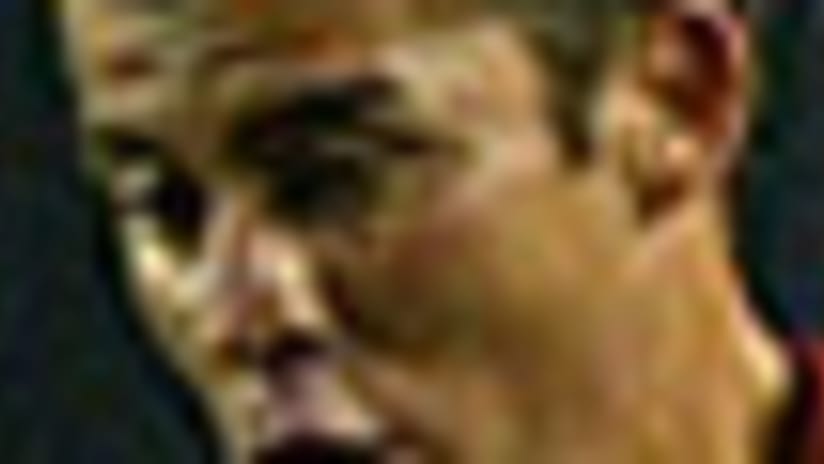it's all a matter of where they lie in the standings.
It's also getting to the point of the season when teams are starting to show a regular idea of how they play. During the season there are times when it is good to look at how teams play, and the standings also go hand-in-hand with that.
Compactness is one of those coaching buzz words. It seems every coach mentions this to his team. In most cases they refer to defensive compactness, which means keeping the field small. Coaches want teams to keep their defending space to a minimum by pushing defenders up and attackers back and in this way reducing the space the opponent has to play in. The same principle also applies to squeezing the field laterally across the width.
However, equally as important is compactness when teams attack -- the importance of attacking players connecting to each other. The teams that are having success are all playing with better offensive cohesion than the teams near the bottom of the table.
The system does not matter. Chivas USA has played many systems but had their best game Saturday in reverting to the 4-3-3 system. In the game against Real Salt Lake, Ramon Ramirez played in the attacking midfield role, orchestrated the game and did not push up as high as Hector Cuadros normally does in that position. As a result the players were better positioned to each other and there were more passing options in the final third.
In the same game Real played a 4-5-1. Clint Mathis and Andy Williams both dropped very deep into midfield and the wide players went high and stayed high. At times Jason Kreis must have been looking for his trusted companion Tonto, because he looked like the Lone Ranger up front. There was little connection in the attacking third because the players were so far apart from each other. Even with this Salt Lake still had enough chances to equalize the game; with better offensive compactness the scoreline would have been different.
So what does offensive compactness mean? In the final third of the field and during your buildup play you need to advance as an attacking unit. A group of players moving together. (Counterattacking is a different thing.) You want players to have multiple options on the ball and you want players moving off the ball. Players need to create space for their teammates by taking defenders out of spaces so teammates can dribble into or run into those same spaces. These types of movements require coordination and cooperation within a group of players.
When you have an active player like the Galaxy's Landon Donovan, he creates movement and space because he runs a lot and intelligently. His initial movements force others to move and get into other spaces. That is how Landon makes other players better. Cobi Jones is more active this year because Donovan's running forces everyone to run more.
Compactness on offense also requires players to be within appropriate passing distances to each other, but not get too tight. If the team gets too tight than the spacing is off and it is difficult to connect. Dallas has worked on maintaining width by getting Ronnie O'Brien and Eddie Johnson a little wider. Richard Mulrooney supports from behind and these three along with Carlos Ruiz become a handful. Giving your teammate space gives them room to maneuver, like on Ruiz's goal against Kansas City last weekend. If the wide players stay too wide all the time then you lose that connection, therefore Johnson and O'Brien are most dangerous when making slashing runs inside with the ball.
Finally, the team that really has it going is New England. Look at the three top teams in the league right now: New England plays a 3-5-2, the Galaxy a 4-4-2 and Dallas a 4-3-3. Again it is not the system but how the players relate to each other in the attacking third of the field. Staying compact on offense also means you can get multiple players into the penalty box for crosses.
New England does this so well. Taylor Twellman and Pat Noonan are almost always there. Clint Dempsey, Shalrie Joseph and Andy Dorman show up at different times, with Dempsey showing up more often. Whoever goes into the box the others get around it so when the ball is cleared you often see it fall to Steve Ralston, Leonard Marshall, Joseph or Dorman. The Revolution place change well and on offense it seems every player has three or four options at various distances and positions.
When teams connect, they score goals. Connecting in the attacking third requires running off the ball, good spacing, good numbers and it helps to have a busy initiator like Donovan, Dempsey, or Mulrooney. If a team stays compact, usually goal-scoring success will follow.
Sigi Schmid is one of the winningest coaches in MLS history, having led the Los Angeles Galaxy to four honors in his five-plus years at the helm, including the 2002 MLS Cup championship. Send comments to Sigi at sigischmid@hotmail.com. Views and opinions expressed in this column views and opinions are the author's, and not necessarily those of Major League Soccer or its clubs.










